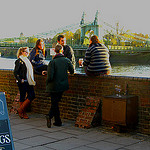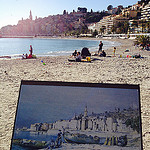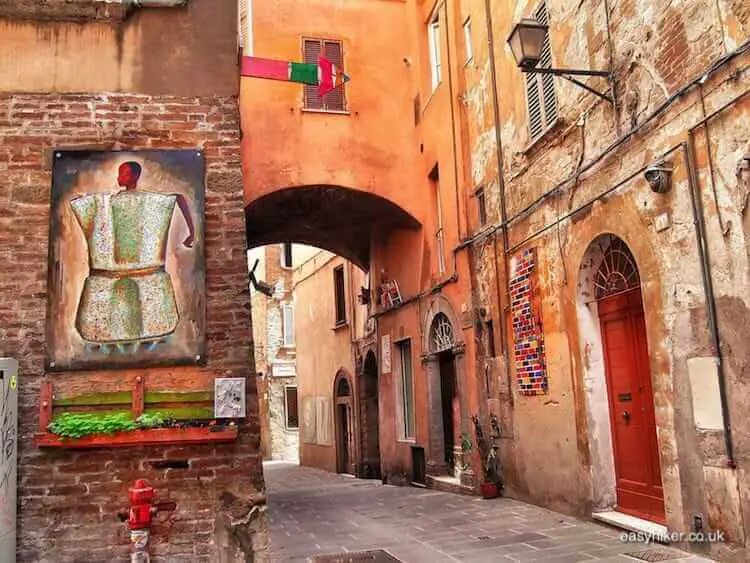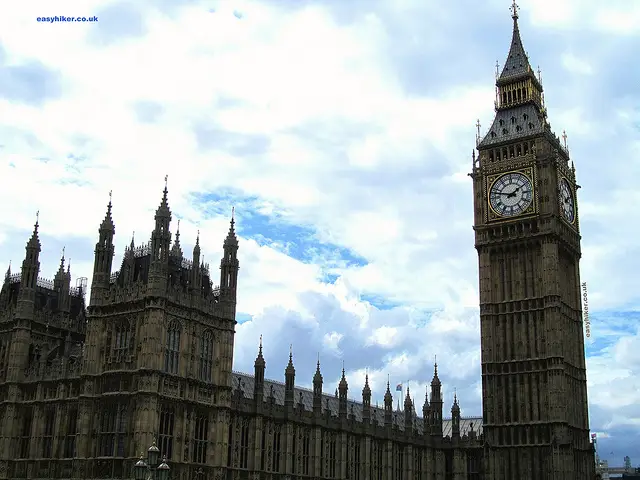The city of Potsdam is the number one daytrip destination from Berlin.
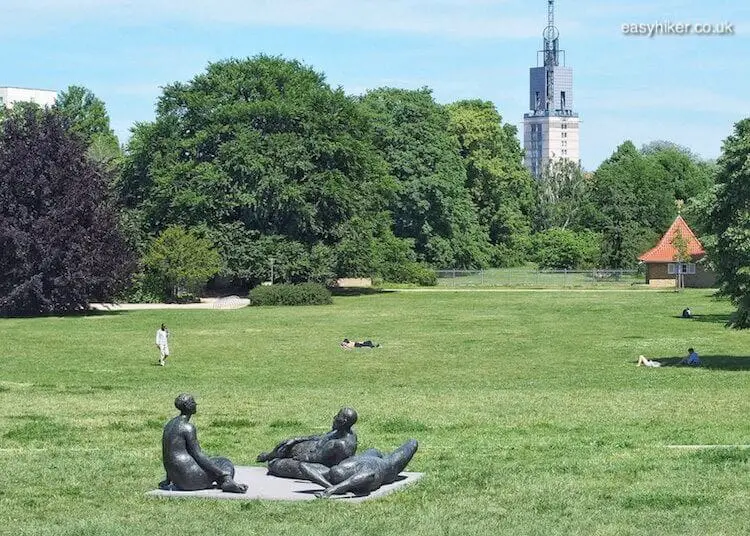
And for good reasons, too: it is surrounded by parks and forests, contains several picturesque bodies of water and provides paths for hiking and biking.
Above all, however, it is full of history: old history – as the former residence of Prussia’s most famous monarch – and contemporary history – as the home of the world-famous “bridge of spies”, the place for some of the most spectacular agent-agent (and sometimes agent-hostage) exchanges of the Cold War.
As a consequence, a single day is clearly not enough to see everything. If you are not going for the “full Potsdam”, however, you can see quite a lot in an afternoon, even in two hours.
Today, we will tell you the best way to make use of your resources if you are on a tight time budget.
Make Potsdam your daytrip destination from Berlin
Start your trip by taking city rail line S1 from Berlin to Potsdam. You will need to buy a ticket for three public transport zones (ABC) from a ticketing machine at any Berlin train, city rail or underground station for € 7.70 pp, only 70 cents more than you have to pay for a two-zone ticket (AB).
From Potsdam train station, walk leftwards towards the town centre by crossing the Lange Brücke across the river Havel …
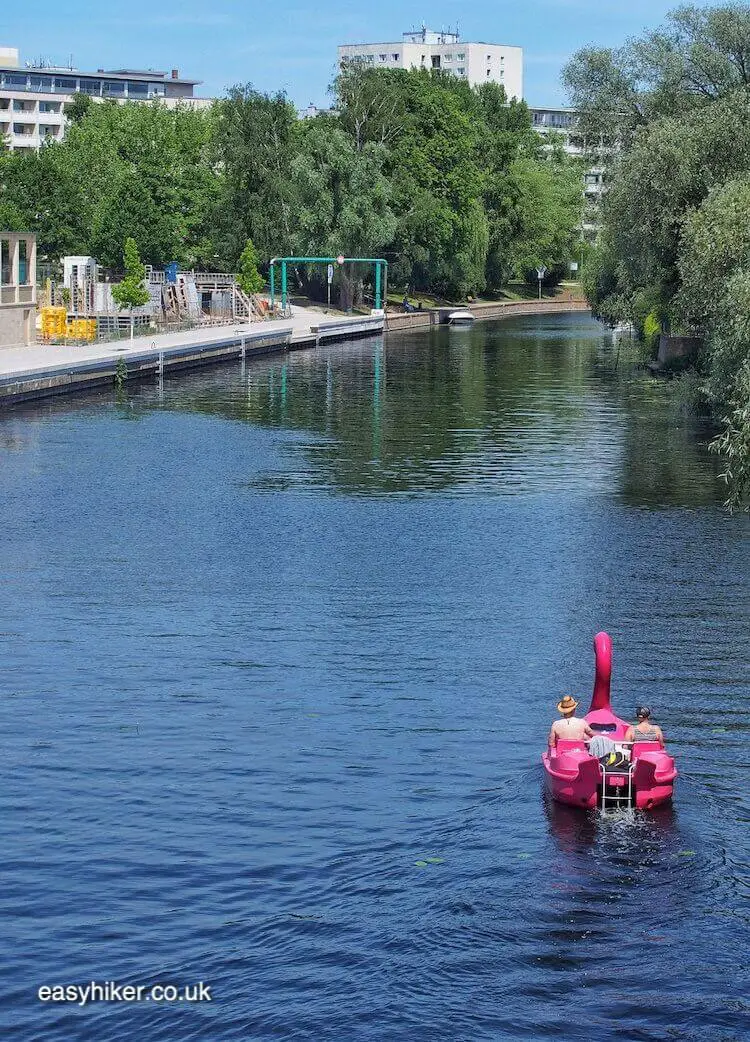
… and take bus no. 695 from the stop near the Alter Markt / Landtag …
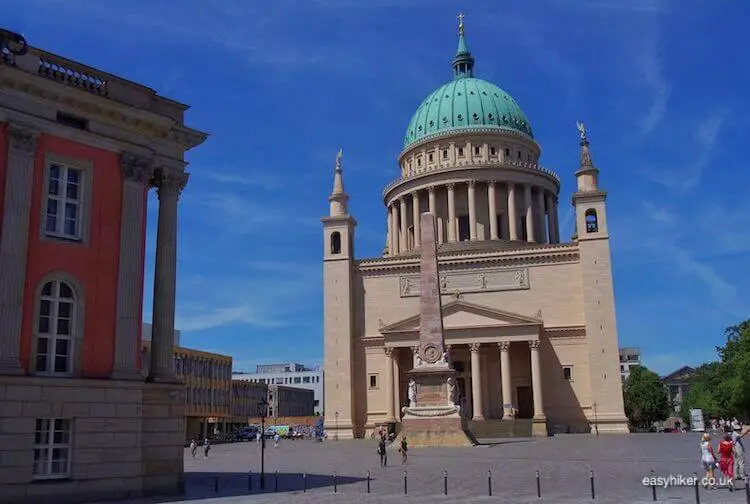
… to Sanssouci Palace. (The fare for all Potsdam buses and trams are included in your ABC ticket.) In principle, this is a walkable distance, but it is better to preserve your energy.
The 18th century Sanssouci Palace was the summer residence of Frederick the Great, the most famous and most colourful monarch in the history of Prussia (beating even Kaiser Bill).
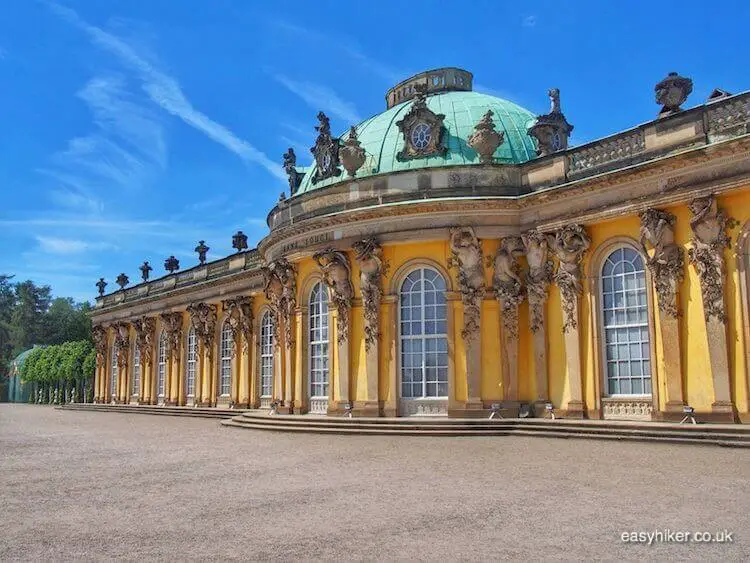
Frederick was, by all accounts, a rather stern and austere personality: a fearless and heroic warrior who did not suffer fools gladly, but also a man who loved porcelain, richly ornamented snuff boxes and playing the flute (and who was almost certainly a homosexual).
His summer palace is the very expression of giddy playfulness, the world’s most complete expression of the “rococo” concept of monarchy (if there was such a thing), in many ways more a counterpoint to than a rival of Louis XIV’s coldly magnificent baroque place at Versailles.
From the palace, walk down to the garden …
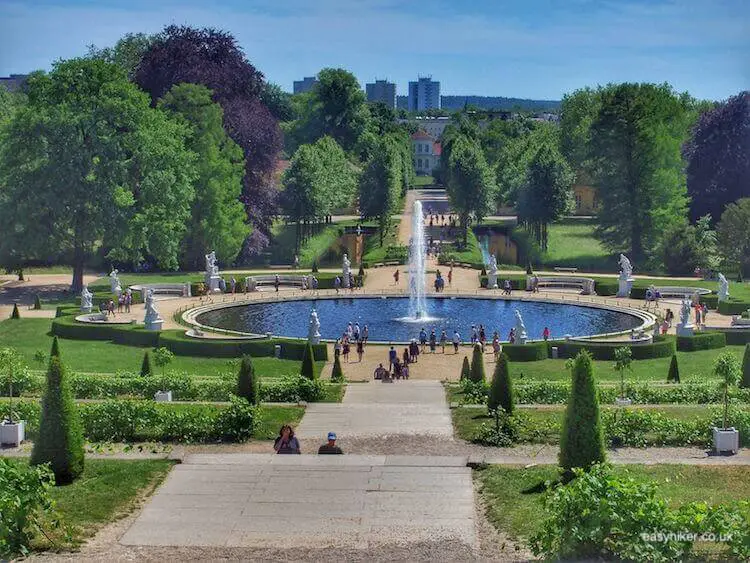
… and then into the walkway on your right hand side – the Hauptallee – in the direction of the Neues Palais.
About one third into this footpath, you will spot the China House on your left …
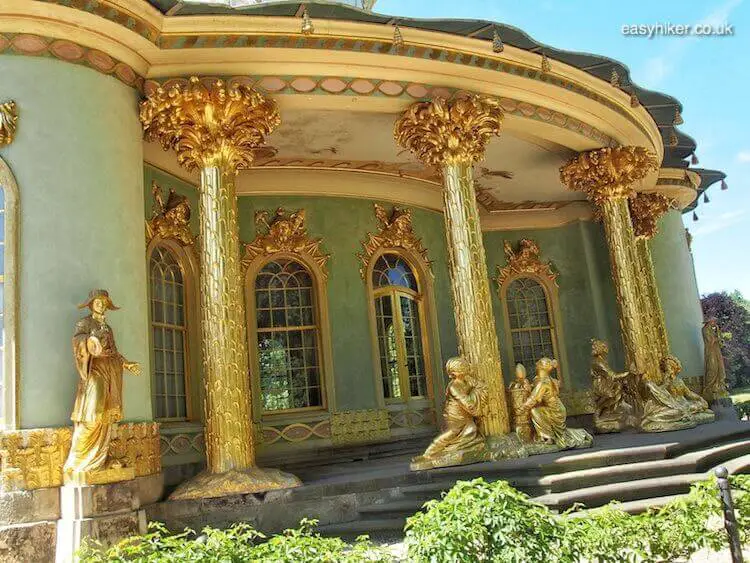
… which is impressive in its own right but also gives you a good idea of the many ways in which Chinese art and sculpture have for centuries been (mis)understood and (mis)conceived in the West.
From here, you have two choices: you can continue on the Hauptallee in the direction of Frederick’s more conventionally baroque Neues Palais, turn right into Lindstedter Weg and right again for the Belvedere, the Dragons House and the Orangerie to return to Sanssouci Palace, perhaps even taking a detour via Bornstedter See to inspect the fake classical ruins that were so theatrically installed on the Ruinenberg (seen here from the Palace itself).
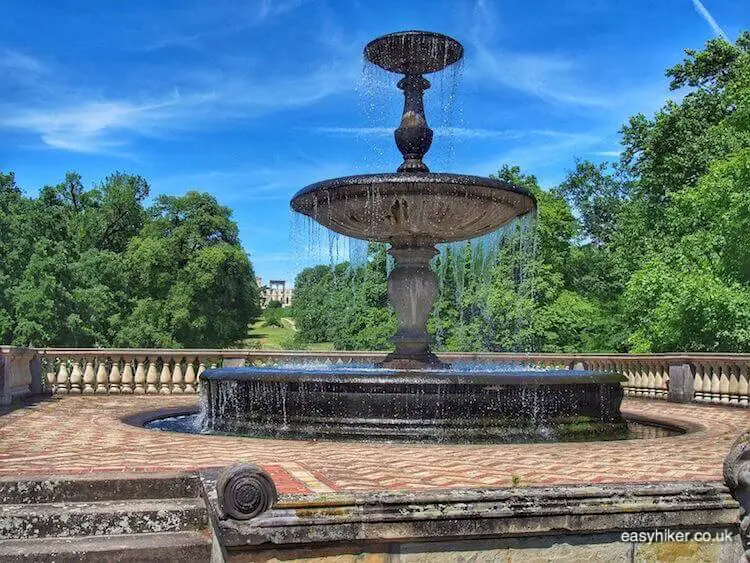
Or, you can take the short trip from the China House through Frederick’s intimate “private garden” …
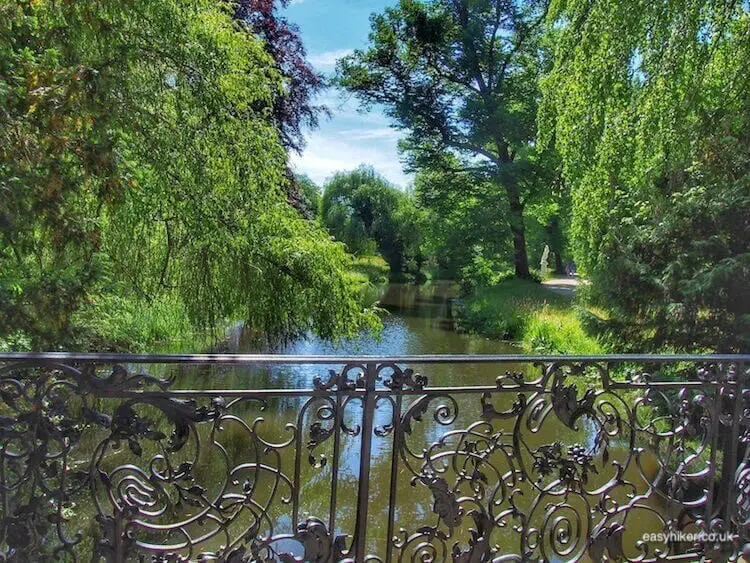
… to the Grünes Gitter (the “green bar” gate) behind which Potsdam’s town centre stretches out.
For a taste of this part of Potsdam, walk past the city’s very own Brandenburg Gate …
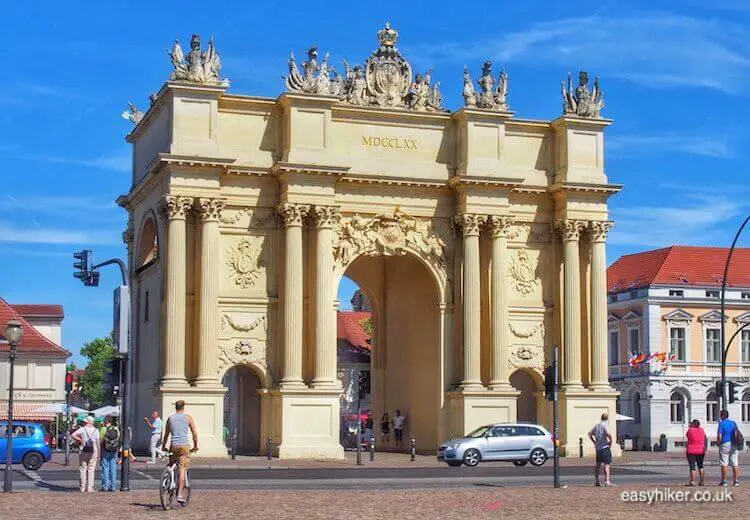
… to the Breite Straße.
Here again, you have a choice. If you have the time, you can walk to the back of Saint Nicholas Church and proceed to the Glienicker Brücke on foot (via Am Kanal and the long Berliner Strasse).
Such a slow approach will allow you to build up a bit of suspense before reaching the walk’s last highlight.
This, after all, is the way the Western agents (such as U2 pilot Gary Powers) and Eastern European dissidents (such as Natan Sharansky) would have taken on their way from Potsdam (which until 1989 belonged to East Germany) to the far side of the Glienicker Brücke (West Berlin), always fearing – one assumes – that something could still go wrong at the very last moment.
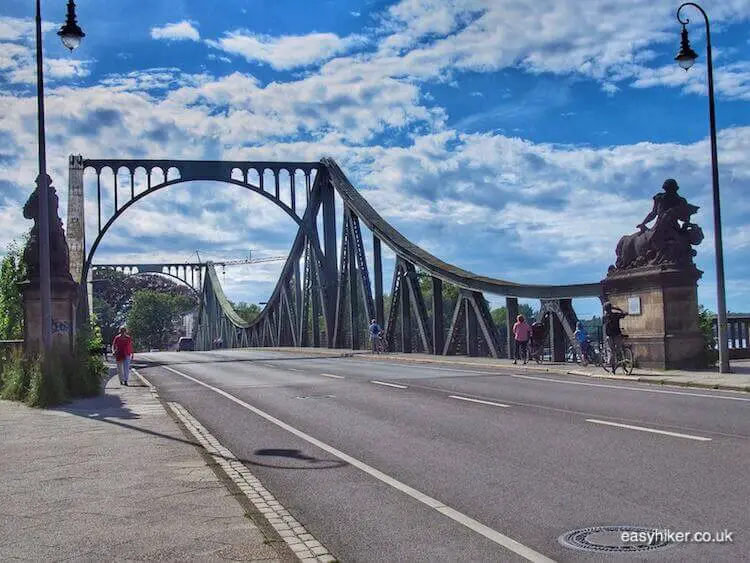
If you are in a hurry, however, you can also take tram line no. 95 which will take you almost all the way to the bridge.
During our own approach of the bridge, I could not help remembering the TV pictures of poor Natan Sharansky who struggled to keep his pants up on those last meters of his long walk to freedom. His Communist captors – who knew that the exchange would be followed live on TV in much of the world – had deliberately outfitted the human rights activist with a pair of trousers that were several sizes too large.
This must have had the KGB residents in East Germany – who, as you probably know, at the time included Vladimir Putin – in stitches. (Some folks believe that few things tell you more about people than the things that make them laugh.)
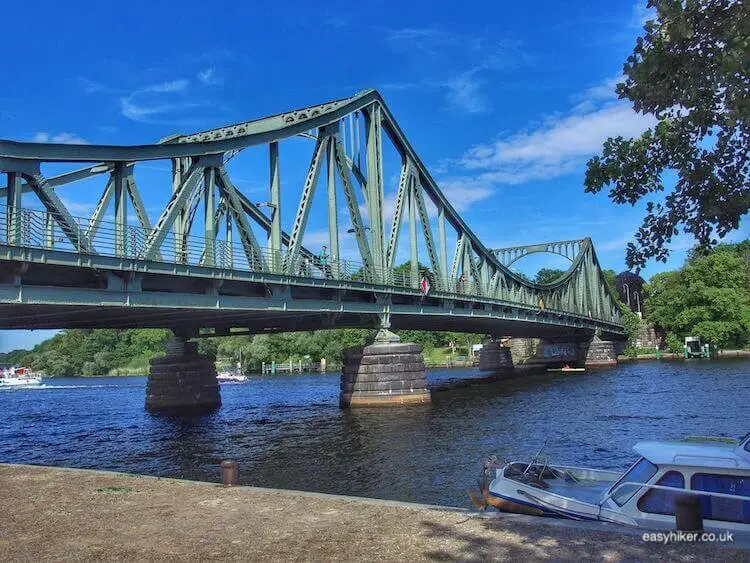
While you enjoy your views across the various bodies of waters to your left and right, more history comes into view.
On your far left, you can just about make out the Cecilienhof where the last details of Germany’s division were agreed at the Potsdam Conference in 1945. Behind the Cecilienhof once lay the Forbidden City, Potsdam’s poshest quarter which was – from 1945 to the 1990s when it was gradually cleared – surrounded by a high security fence and reserved for the high brass of the Red Army and the KGB.
For almost four decades, more than 500,000 Russians lived in East Germany, the largest contingent ever maintained by any occupying army over such a long period. Now they are all gone, having left barely a trace behind them in the country’s cultural fabric.
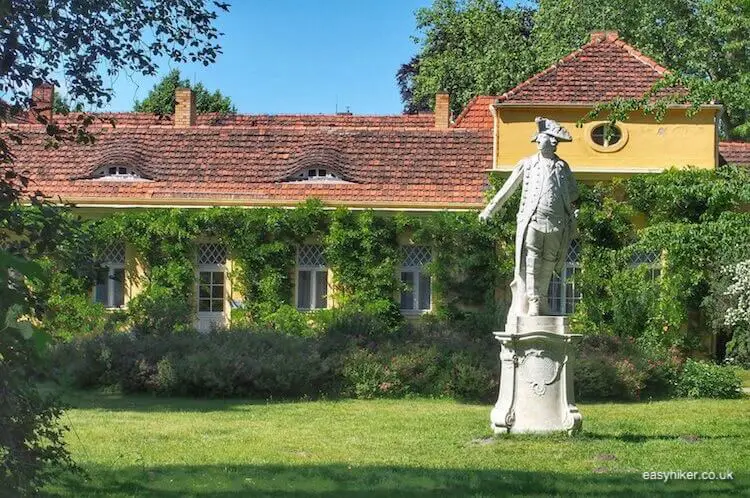
There’s something to think about while you wait for the bus on the far side of the bridge that will take you back to Berlin.



